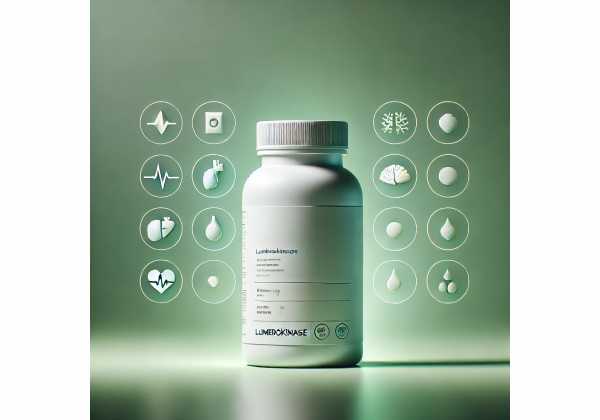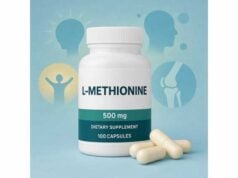
Lumbrokinase is a group of fibrin-targeting enzymes originally isolated from earthworms and now produced under modern quality controls. People turn to it to support healthy circulation, help maintain blood flow, and complement medical care for clot-related conditions under professional supervision. What makes lumbrokinase distinct is its high fibrin specificity: it works where fibrin exists, which is why it’s often described as “clot-smart” rather than a broad blood thinner. You’ll see it sold as capsules with standardized enzymatic activity or as branded preparations used in clinical research. In practical terms, readers ask about two things: does it help, and how do you use it safely? This guide answers both with a people-first approach—what it is, how it likely works, what benefits have evidence behind them, who should avoid it, and how dosing is handled in studies versus everyday supplements. You’ll also find practical tips for timing, interactions, and how to discuss lumbrokinase with your clinician if you’re already taking antiplatelets or anticoagulants.
Quick Overview
- Supports fibrin breakdown and microcirculation, with evidence for adjunct use in acute ischemic stroke.
- May improve functional recovery markers in early studies; evidence quality varies and requires medical oversight.
- Typical research dosing is 490 mg three times daily (capsule) for defined periods; supplement labels differ.
- Bleeding risk appears lower than non-specific thrombolytics but still exists; monitor for bruising or nosebleeds.
- Avoid if you are on anticoagulants without clinician approval, have bleeding disorders, are pregnant, or have surgery scheduled.
Table of Contents
- What is lumbrokinase and how does it work?
- Does it really help? Key benefits and where evidence stands
- How to use it: forms, timing, and dosage examples
- What changes response: interactions, labs, and product differences
- Common mistakes and troubleshooting
- Safety, side effects, and who should avoid it
- Evidence snapshot: what we know and what we don’t
What is lumbrokinase and how does it work?
Lumbrokinase is not a single molecule but a family of serine proteases with strong activity against fibrin, the protein mesh that stabilizes blood clots. When a vessel injury heals, your body removes excess fibrin to restore normal flow. Problems arise when fibrin persists or forms inappropriately, thickening blood and contributing to impaired microcirculation. Lumbrokinase appears to favor sites where fibrin is present and—unlike many “global” proteases—shows relatively high specificity. That’s one reason some clinicians consider it as an adjunct for circulation management and post-event recovery plans.
Mechanistically, several pathways are relevant:
- Direct fibrinolysis: Some lumbrokinase fractions can cleave fibrin strands, loosening the clot matrix.
- Fibrinogenolysis modulation: Reducing fibrinogen (the precursor to fibrin) may lower viscosity in certain contexts.
- Platelet effects: Limited data suggest down-tuning of platelet aggregation, which may contribute to better flow without broadly inhibiting platelet function.
- Endothelial support: Emerging preclinical work points to reduced endoplasmic reticulum stress and pro-inflammatory signaling in ischemic models, which could support tissue recovery.
Because lumbrokinase acts where fibrin is present, many users don’t experience the systemic bruising that can accompany non-specific enzymatic supplements. That does not mean it’s risk-free; any agent that modulates fibrin can increase bleeding risk—especially when combined with aspirin, clopidogrel, or prescription anticoagulants. Another distinctive feature is oral bioactivity. Human and animal data indicate that certain proteolytic enzymes—or fragments with activity—can cross the intestinal barrier and retain function in blood. That’s why lumbrokinase is commonly sold as oral capsules and featured in clinical protocols that do not require injections.
Finally, terminology varies across labels. You might see:
- “Lumbrokinase” as a generic name for the enzyme group.
- Branded extracts (for example, preparations standardized to a specific activity and manufacturing method).
- Activity units alongside capsule milligrams. Activity reflects what the enzyme does (fibrin cleavage) rather than just how much powder you swallow.
If you’re evaluating a product, prioritize brands that disclose standardized activity, lot testing, and third-party verification.
Does it really help? Key benefits and where evidence stands
When people ask if lumbrokinase “works,” they usually mean: where does it have meaningful human evidence, and what outcomes improve? The strongest human data to date come from adjunct use in acute ischemic stroke (AIS), where trials and meta-analyses report improvements in functional scores when lumbrokinase is added to standard care in specific settings. Measures such as the National Institutes of Health Stroke Scale (NIHSS), modified Rankin Scale (mRS), and Barthel Index (BI) have shown favorable shifts in certain studies. Early-phase work in healthy volunteers also suggests a tolerable safety profile at typical study doses over short periods.
Here is a practical way to interpret the landscape:
- Acute ischemic stroke adjunct therapy: Meta-analytic data pooling randomized trials indicate improved functional outcomes versus supportive care alone when lumbrokinase is used as an adjunct. Importantly, these analyses report no significant increase in overall adverse events compared with control arms in the included studies. Because protocols, follow-up length, and baseline care vary, the overall certainty of evidence remains moderate to low, and larger, rigorously controlled studies are still needed. Nevertheless, these signals explain why interest remains high in stroke rehabilitation frameworks.
- Functional recovery markers: Individual hospital-based randomized trials have reported gains in BI and NIHSS at discharge and day-30 when lumbrokinase is added to standard regimens. These outcomes matter because they map to real-world independence, mobility, and self-care.
- Circulation and viscosity-related metrics: Across clinical and translational work, researchers note changes in markers like fibrinogen, D-dimer, and platelet aggregation in lumbrokinase groups. These lab shifts are consistent with its fibrin-targeting profile and provide mechanistic plausibility for observed clinical benefits.
- Microcirculation and tissue healing (early data): Preclinical studies suggest benefits in ischemic brain models and postsurgical adhesion prevention. While not clinical endpoints, these findings support ongoing exploration in areas such as microclot-related syndromes, wound healing, and endothelial stress modulation.
What lumbrokinase is not: a replacement for guideline-directed thrombolysis or antithrombotic care. In time-sensitive emergencies (e.g., stroke onset within eligible windows), approved therapies remain the standard. Lumbrokinase’s current role is best understood as an adjunct within supervised protocols, or as a circulatory support supplement for appropriate adults after individualized risk assessment.
For everyday readers, the key takeaways are straightforward: the science is promising yet still developing; benefits are most consistent when lumbrokinase is used with standard care; and safety hinges on context—what else you take, your bleeding risk, and how closely you’re monitored.
How to use it: forms, timing, and dosage examples
Forms and standardization. Lumbrokinase is sold primarily as oral capsules. Two labeling styles appear on shelves:
- By weight (mg per capsule): Total mass of the extract (e.g., 230–500 mg).
- By activity units: Functional potency based on fibrin degradation assays. Activity tells you more about effect than weight does.
If you must choose between two products, prioritize activity-standardized labels and transparent quality documentation.
Timing with meals. Enzymes intended for systemic effects are typically taken away from meals, often 1 hour before or 2 hours after eating. Food proteins can compete with substrate and may reduce the amount that reaches circulation. Always follow your specific product’s directions unless your clinician advises otherwise.
Dosing examples (context-specific):
- Research settings (acute ischemic stroke adjunct): Oral 490 mg three times daily has been used for short, protocol-defined periods under supervision. This is not a self-care starting point; stroke care requires clinical evaluation, imaging, and guideline-directed management.
- General circulation support (supplement use): Because products differ in activity per capsule, labels often recommend 1–2 capsules once or twice daily on an empty stomach. In practice, many clinicians start low (e.g., once daily) and reassess tolerability, bruising, or gum bleeding before titrating. Always coordinate with your prescriber if you use aspirin, clopidogrel, or anticoagulants.
- Tapering and cycling: Some users employ interval cycles (e.g., 8–12 weeks on, then reassess), especially when the aim is short-term support around recovery phases. There’s no universal schedule; decisions should reflect your diagnosis, other medications, and lab results.
What to monitor.
- Symptoms: New bruising, nosebleeds, prolonged bleeding from cuts, black stools, or severe headaches warrant immediate medical attention.
- Labs (when clinically appropriate): Fibrinogen, D-dimer, platelet count, and complete blood count can help contextualize effects. If you’re on anticoagulants, your anticoagulation clinic may request additional checks.
- Procedures: Most clinicians stop lumbrokinase 5–7 days before invasive procedures, then restart after hemostasis is confirmed. Get individualized instructions.
Special populations. Do not self-start lumbrokinase if you are pregnant, trying to conceive, breastfeeding, or if you have active bleeding, recent hemorrhagic stroke, severe liver disease, peptic ulcer with bleeding, or bleeding disorders. For older adults, those with low body weight, and people on multiple medications, a lower initial dose and closer supervision are prudent.
Storage and quality. Keep capsules dry, sealed, and away from heat. Choose brands with manufacturer lot numbers, third-party testing, and consistent activity units. Enzyme stability matters; reputable suppliers protect against moisture and heat during shipping and storage.
What changes response: interactions, labs, and product differences
Two people can take the same label dose and experience different effects. The reasons fall into three buckets: co-medications, individual biology, and product design.
1) Co-medications and supplements
- Antiplatelets (e.g., aspirin, clopidogrel) and anticoagulants (e.g., warfarin, DOACs): Combined use can increase bleeding risk. If your care team approves adjunctive lumbrokinase, they may adjust doses, add lab checks, or set stricter stop-rules before procedures.
- Other proteolytic enzymes (nattokinase, serrapeptase, bromelain): Stacking can be synergistic for fibrin targets but adds uncertainty around bleeding. If used together, clinicians often reduce doses and monitor more closely.
- Fish oil (EPA/DHA) and high-dose vitamin E: These can modestly affect bleeding time; be cautious when layering multiple agents.
- Herbals with anticoagulant potential: Ginkgo, garlic concentrates, ginseng, and high-dose turmeric extracts may potentiate effects.
2) Individual biology
- Baseline fibrinogen and D-dimer: Higher fibrin burden may make effects more noticeable but can also signal underlying disease requiring medical care.
- Platelet function, hematocrit, and liver function: These shape both risk and benefit.
- Gut permeability and protein handling: Oral proteases depend on surviving digestion and crossing the gut barrier. Variability here may change how much active fraction reaches circulation.
3) Product design
- Activity per capsule: A 250 mg capsule from one brand can have very different activity than a 250 mg capsule from another. Whenever possible, pick products reporting standardized activity units validated by a recognized assay.
- Enteric protection and excipients: Coatings and excipients influence enzyme survival in the stomach and release in the intestine.
- Batch-to-batch consistency: Look for brands with long manufacturing runs and accessible certificates of analysis.
Interpreting labs and symptoms
- Mild bruising or gum bleeding can indicate you’re at or above your current threshold; consider dose reduction and notify your clinician.
- Stable CBC and fibrinogen with improved functional capacity (e.g., less calf tightness on walking) may suggest a good balance.
- Procedure planning: Share all supplement use before dental work, colonoscopy, or surgery. A clear stop date and restart plan prevent surprises.
Travel, dehydration, and sedentary time
- Long flights, immobilization, and dehydration increase clot risk. These settings call for movement, hydration, and clinician-approved strategies. Do not rely on over-the-counter enzymes as a substitute for medical VTE prevention.
Common mistakes and troubleshooting
Mistake 1: Treating lumbrokinase like a generic “blood thinner.”
Enzymes are not interchangeable with anticoagulants. Do not replace prescribed therapy with lumbrokinase. If you’re already on anticoagulants, involve your prescriber before adding it.
Mistake 2: Ignoring activity units.
Two labels with 300 mg can deliver very different effects if one has higher enzymatic activity. If a product does not disclose activity or third-party testing, reconsider.
Mistake 3: Taking with meals by default.
Food proteins can soak up enzymatic activity. Most protocols favor empty-stomach dosing unless you’re sensitive. If you experience GI discomfort, speak with your clinician; occasionally, a small carbohydrate snack or a different formulation resolves it without undermining efficacy.
Mistake 4: Stacking multiple fibrinolytics.
Combining lumbrokinase with nattokinase, serrapeptase, and high-dose fish oil, then adding aspirin, is a recipe for unpredictable bleeding risk. If combination therapy is considered, build it intentionally with medical oversight.
Mistake 5: Continuing through procedures.
Pause lumbrokinase 5–7 days before invasive procedures (unless your clinician advises otherwise) and restart only after hemostasis is secure.
Mistake 6: Expecting quick fixes in chronic disease.
In conditions with long-standing vascular changes, benefits—if any—are gradual and subtle. Track changes in stamina, limb heaviness, and recovery after exertion alongside labs and blood pressure.
Troubleshooting guide
- New bruising, nosebleeds, heavy menses, black stools, severe headache: Stop lumbrokinase and seek immediate medical care.
- Reflux or stomach upset: Verify empty-stomach timing; consider a different brand or enteric-coated capsule. Evaluate for drug interactions (e.g., NSAIDs).
- No perceived benefit after 8–12 weeks despite good adherence: Re-evaluate goals with your clinician; check labs, switch formulations, or discontinue.
- You need an MRI, dental surgery, or colonoscopy: Tell the team you use lumbrokinase; ask for explicit stop and restart dates.
Safety, side effects, and who should avoid it
What side effects are reported?
Short-term trials in healthy adults have not shown major changes in standard safety labs when lumbrokinase was taken at common study doses (for example, 490 mg three times daily). In stroke adjunct protocols, overall adverse event rates have been similar between lumbrokinase and control groups, with no clear signal for major bleeding in those settings. Nonetheless, individual responses vary.
Possible side effects
- Mild GI discomfort, nausea, or early satiety.
- Easy bruising, occasional epistaxis, or bleeding gums—especially with concurrent antiplatelets.
- Rare allergic-type reactions (rash, itching); discontinue and seek care if these occur.
- Theoretical risk of intracranial or GI bleeding increases when combined with antiplatelets or anticoagulants, or in people with underlying bleeding risks.
Who should avoid lumbrokinase (or use only with direct medical supervision)
- Active bleeding, bleeding disorders, recent hemorrhagic stroke, or intracranial lesions at risk for bleeding.
- Planned surgery or recent trauma without a clear perioperative plan.
- Pregnancy, trying to conceive, or breastfeeding.
- Severe hepatic disease, active peptic ulcer, or uncontrolled hypertension.
- Children and adolescents, unless prescribed in a research or specialty setting.
- Concurrent anticoagulation (warfarin, apixaban, rivaroxaban, dabigatran) or dual antiplatelet therapy, unless your cardiology/neurology team explicitly approves and co-manages.
Drug and supplement interactions (summary)
- Higher-risk combinations: anticoagulants, dual antiplatelets, high-dose fish oil, other proteolytics.
- Procedure risk multipliers: corticosteroid injections, spinal procedures, dental extractions—ensure coordinated stop dates.
Practical safety rules
- Share your full medication and supplement list with your healthcare team.
- Start low, titrate slowly, and watch for bruising.
- Pause before procedures and in any unexpected bleeding scenario.
- Use reputable products with disclosed activity and third-party testing.
Evidence snapshot: what we know and what we don’t
What we know
- Fibrin-specific activity sets lumbrokinase apart mechanistically from non-specific proteases. That specificity underlies its targeted action profile.
- Oral use is plausible: absorbed fractions or active peptides can enter circulation and affect fibrin-related markers.
- Clinical signals in stroke adjunct care: Meta-analytic work and randomized hospital-based trials report improvements in functional outcomes (NIHSS, mRS, BI) when added to supportive care in acute ischemic stroke settings, without a strong signal for excess adverse events in the included studies.
- Short-term safety in healthy adults: Randomized placebo-controlled data at 490 mg three times daily for two weeks did not show significant changes in bleeding indices or core chemistry panels.
What remains uncertain
- Long-term safety at supplemental doses in diverse populations (older adults, polypharmacy, chronic kidney disease).
- Head-to-head comparisons against or alongside modern antithrombotic strategies outside of stroke units.
- Standardization across brands: Activity units are not always harmonized, complicating dose-to-effect predictability for consumers.
How to apply the evidence today
- For acute care (e.g., stroke), follow standard protocols. If lumbrokinase is considered, it should be as an adjunct under specialist supervision, using a defined dose, duration, and monitoring plan.
- For non-acute circulation support, weigh personal risk factors, medication list, and goals. Prioritize products with transparent activity standardization and work with a clinician willing to monitor symptoms and labs.
Bottom line: Lumbrokinase shows mechanistic plausibility and encouraging early clinical signals. Use it thoughtfully, avoid risky combinations, and keep your medical team fully informed.
References
- Therapeutic Potential of Lumbrokinase in Acute Ischemic Stroke: A Meta-Analysis of Efficacy and Safety 2025 (Systematic Review)
- Effect of DLBS1033 on Functional Outcomes for Patients with Acute Ischemic Stroke: A Randomized Controlled Trial 2021 (RCT)
- Efficacy and safety of lumbrokinase plus aspirin versus aspirin alone for acute ischemic stroke (LUCENT): study protocol for a multicenter randomized controlled trial 2022 (Protocol)
- The Safety and Tolerability of Lumbrokinase DLBS1033 in Healthy Adult Subjects 2016 (RCT)
- Intestinal Absorption of Fibrinolytic and Proteolytic Enzymes 2010 (Mechanistic Study)
Disclaimer
This guide is educational and does not substitute for professional medical advice, diagnosis, or treatment. Do not start, stop, or change any medication or supplement based on this article without consulting a qualified healthcare professional who knows your medical history. If you have stroke symptoms, chest pain, severe headache, shortness of breath, or signs of internal bleeding, call emergency services immediately.
If you found this article helpful, please consider sharing it on Facebook, X (formerly Twitter), or your favorite platform, and follow us for future updates. Your support helps us continue creating clear, evidence-guided health content.










